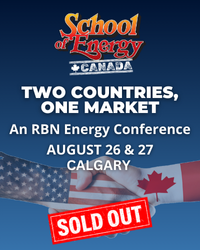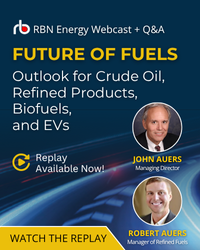Much like their heated competition to build new crude oil pipelines from the Permian to the Gulf Coast, midstream, logistics and trading companies are jockeying to construct the first new export terminal capable of fully loading Very Large Crude Carriers — Trafigura joined the fray earlier this week. While VLCCs are by far the most cost-efficient way to haul crude to Asia, their Godzilla-like physical dimensions restrict the number of land-based terminals they can use. And even those that can accommodate these seagoing behemoths can only load a VLCC part-way — “reverse lightering” out in deeper, open waters is required to fill the supertanker to the tippy top. So a handful of ambitious midstreamers are developing plans for offshore terminals out in deep water, miles from the Texas coast. Today, we continue our review of these proposals with a look at JupiterMLP’s plan for a terminal off Brownsville — and a new Permian pipeline to the city.
This is the second blog in this series. As we said in Part 1, U.S. crude oil exports have been rising steadily since the 40-year ban on most exports was lifted in December 2015. According to the Energy Information Administration (EIA), U.S. crude exports averaged 590 Mb/d in 2016, rose to 1.1 MMb/d in 2017, and so far in 2018 have averaged just over 1.8 MMb/d. In the week ending August 3 — the latest EIA data available — nearly 1.9 MMb/d was being sent abroad. Recently, exports hit an all-time high at an even 3.0 MMb/d exported the week ended June 22. The ratcheting up of export volumes is likely to continue — it needs to, really, to help balance a steady rise in U.S. production. As we said in Got That Swing, the three production-forecast price scenarios that we assessed in our most recent update — crude prices flat at $70/bbl or $55/bbl to 2023, or (like the forward curve) ramping down to $55/bbl over the next five years — would result in crude production growth of between 2.0 MMb/d (under the flat-at-$55 scenario) and 5.0 MMb/d (under the flat-at-$70 scenario). That’s on top of the 11 MMb/d the U.S. is already producing, which is twice the 5.5 MMb/d rate back in 2010. U.S. refineries already are operating at close to full capacity, and while at least a few refinery expansion projects are being planned, they would only be capable of absorbing a small portion of the incremental crude production we’re likely to see. Rising exports are, to put it bluntly, a market necessity.
In the same way that Texas-size Ford F-Series and Chevy Silverado pickups enjoy most-favored-vehicle status in the Lone Star State, the Very Large Crude Carrier (VLCC) is preferred by many long-distance shippers. VLCCs can very economically transport about 2 MMbbl of crude oil to Asia or Europe, but their dimensions — a typical VLCC is about 1,100 feet long, with a beam (or width) of nearly 200 feet and a fully loaded draft of 72 feet — limit where they can dock. As we said in Rock the Boat, there’s still only one terminal on the Gulf Coast that can fully load a VLCC: the Louisiana Offshore Oil Port (LOOP; green diamond in Figure 1), which is located in 110-foot-deep waters 18 miles off Port Fourchon, LA. And while LOOP benefits from the 72-MMbbl crude storage, blending and distribution hub in nearby Clovelly, LA (red dot), pipeline connections to Clovelly from key Texas and Oklahoma plays to LOOP are limited (see Part 1 and Clovelly Calling? for more on that).
Join Backstage Pass to Read Full Article







